by Louise Irvine
The moon flask was one of the most popular forms of art pottery during the Aesthetic era in the late 19th century. Originally, the full moon porcelain surface was used to hand-paint symbolic designs for Chinese imperial palaces and was adopted later by Japanese artists. The European craze for Japonisme introduced many new decorative elements to artist potters, including the moon flask.
Chinese porcelain moon flasks are known as Baoyueping, meaning “embracing the moon. Typically, they were decorated with symbolic flowers, dragons or Buddhist emblems in blue and white. During the Ming Dynasty (1368-1644), the circular forms were derived from Middle Eastern metal-ware which was imported to China along the Silk Road. Some imperial Chinese porcelain moon flasks stand over 20 inches tall. Producing them required a great deal of technical skill as they tended to lean over during firing. Two years ago, a moon flask made for Emperor Qianlong was sold by Sotheby’s in France for over $5 million after a fierce bidding war between Chinese and European buyers.
The flattened gourd shape can be seen also in pilgrim flasks, which have two handles, and were used for conveying holy water and oils from pilgrimage sanctuaries during antiquity and the Middle Ages. Portable bottles with loops for attachment are known generically as costrels, from an old French word meaning “by the side”. They were made in clay, metal and leather and were used by travelers for centuries.
Porcelain production came to Japan in the 17th century thanks to Korean potters who were inspired by Chinese styles. Initially, the decorative arts of Japan were brought to Europe exclusively by Dutch traders. However, in 1854, Japan’s period of self-imposed isolation came to an end, and exports began to flood into the West. Asian art and design were showcased at the 1862 International Exhibition in London and the Exposition Universelle in Paris in 1867, inspiring European artists and designers with a new aesthetic.
Alongside the Japanese works at the 1867 Paris exhibition was a small group of Minton china designed by Dr. Christopher Dresser (1834-1904). This pioneering industrial designer began working for Minton in the mid-1860s. Among his early designs were bone china moon flasks with Japanese decorative motifs. A striking pair at WMODA is attributed to Dresser and they feature storks which bring happiness and peacocks which symbolize compassion. Dresser was the first European designer to visit Japan in an official capacity and during his sojourn he lamented that he never saw a living specimen of the stork which he thought very strange given their frequent representations in Japanese art. “I used to think that storks must be almost as common in Japan as sparrows are in England; but this proved to be a great mistake.”
Minton bone china flask shapes were also used for pate-sur-pate designs by Arthur Morgan and Henry Hollins as well as for bird paintings by William Mussill and William Coleman. A talented illustrator, Coleman was drawn to Minton by their striking ground colors, notably the heavenly blue known as Bleu Celeste. Coleman was appointed director of the Minton Art Pottery Studio in London when it was established in 1870 to give employment to young women. Moon flasks and pilgrim flasks were favorite shapes at the new studio as they provided an expansive circular “canvas” for the artist’s talents. Coleman’s sisters, Rebecca and Helen Cordelia, executed many of his designs and occasionally used the same image on pilgrim flasks and plaques.
When Coleman left the studio in 1873, John Eyre had responsibility for creating designs and teaching the artists. Sadly, Minton’s London venture was short-lived as fire destroyed the building in 1875. For a while, Eyre taught china painting at the London retailer W. P. & G. Phillips, before continuing his career at Doulton’s Lambeth pottery in 1883. There are several examples of his work at WMODA including a Minton pilgrim flask. Several of the Minton artists found employment at Doulton’s after the fire, including Katherine Sturgeon and Linnie Watt.
Artists at the Doulton art pottery studio in Lambeth decorated several different styles of moon flasks in the Faience technique. Scenes of children in rural settings were popular subjects and were often produced in pairs by leading artists such as Esther Lewis and Ada Dennis. Assistants in the Faience department painted border designs or the reverse of the flask. Occasionally the moon flask form can be found in Doulton Lambeth stoneware and in Burslem art wares. The large Burslem moon flasks decorated in blue and white are reminiscent of their Chinese and Japanese precedents.
Read more about Minton
Putti in Porcelain
Read more about Victorian Women
Women's Day
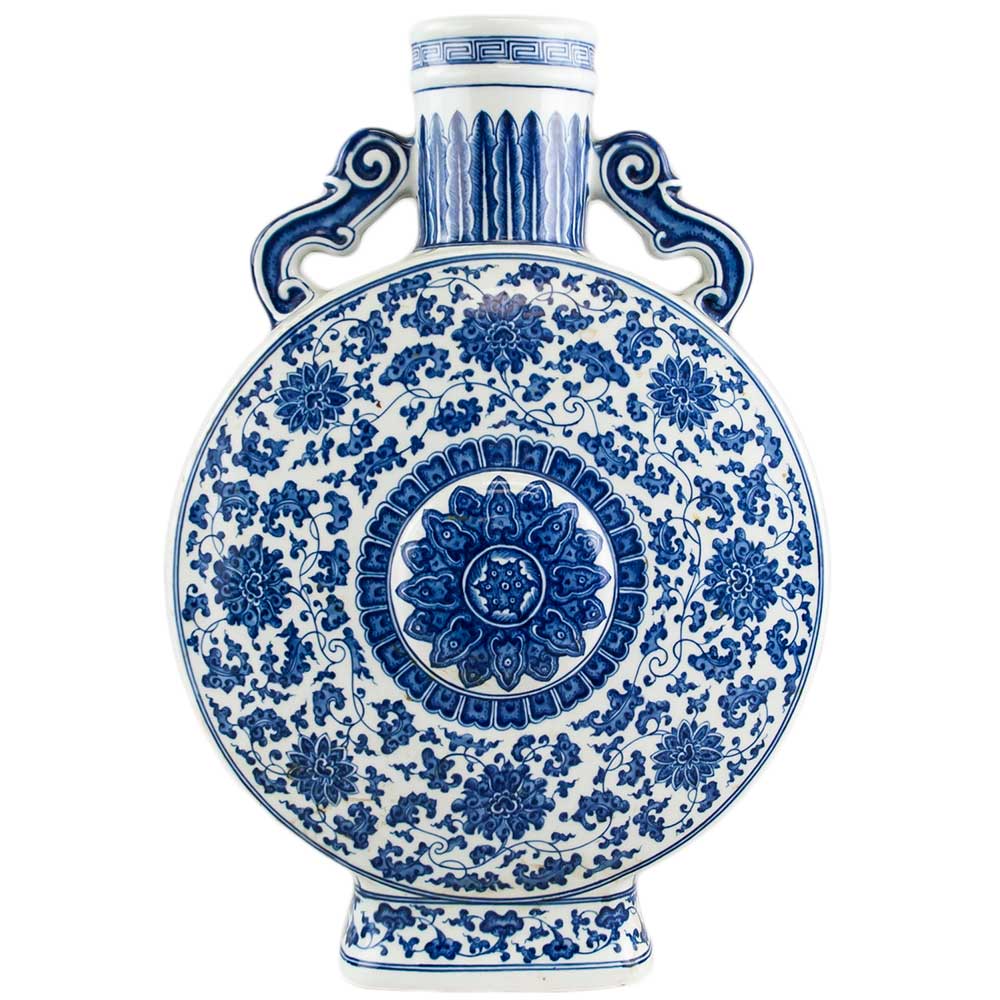
Qing Dynasty Moon Flask

Chinese Cloisonne Enamel Moon Flask
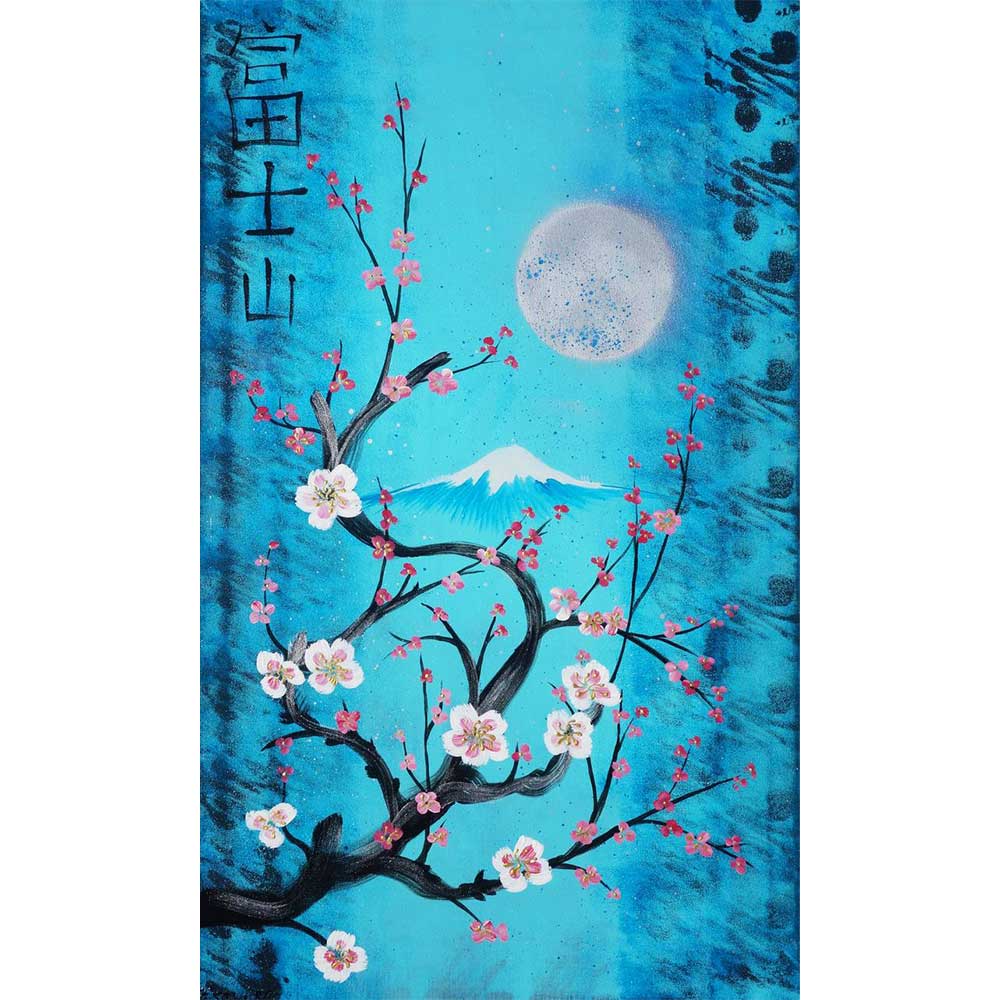
Japanese Moon Painting
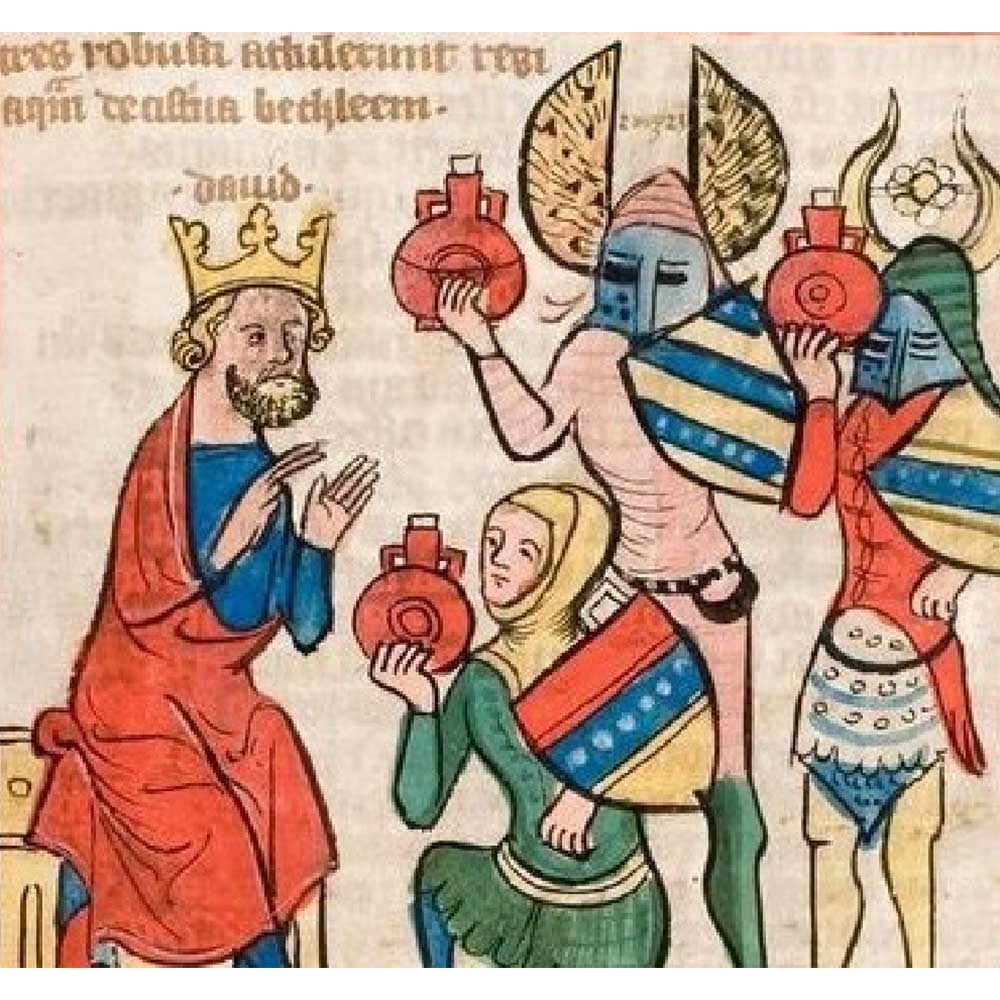
Manuscript with costrels
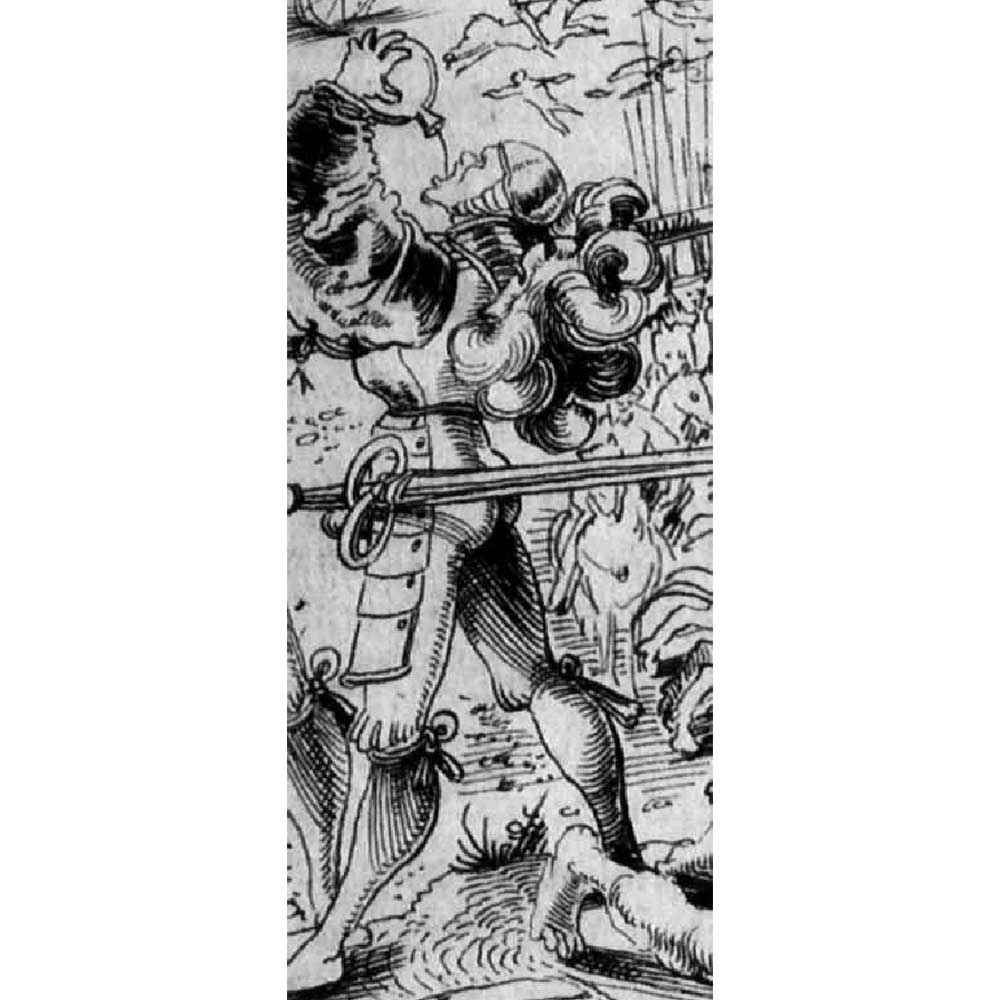
Costrel in use
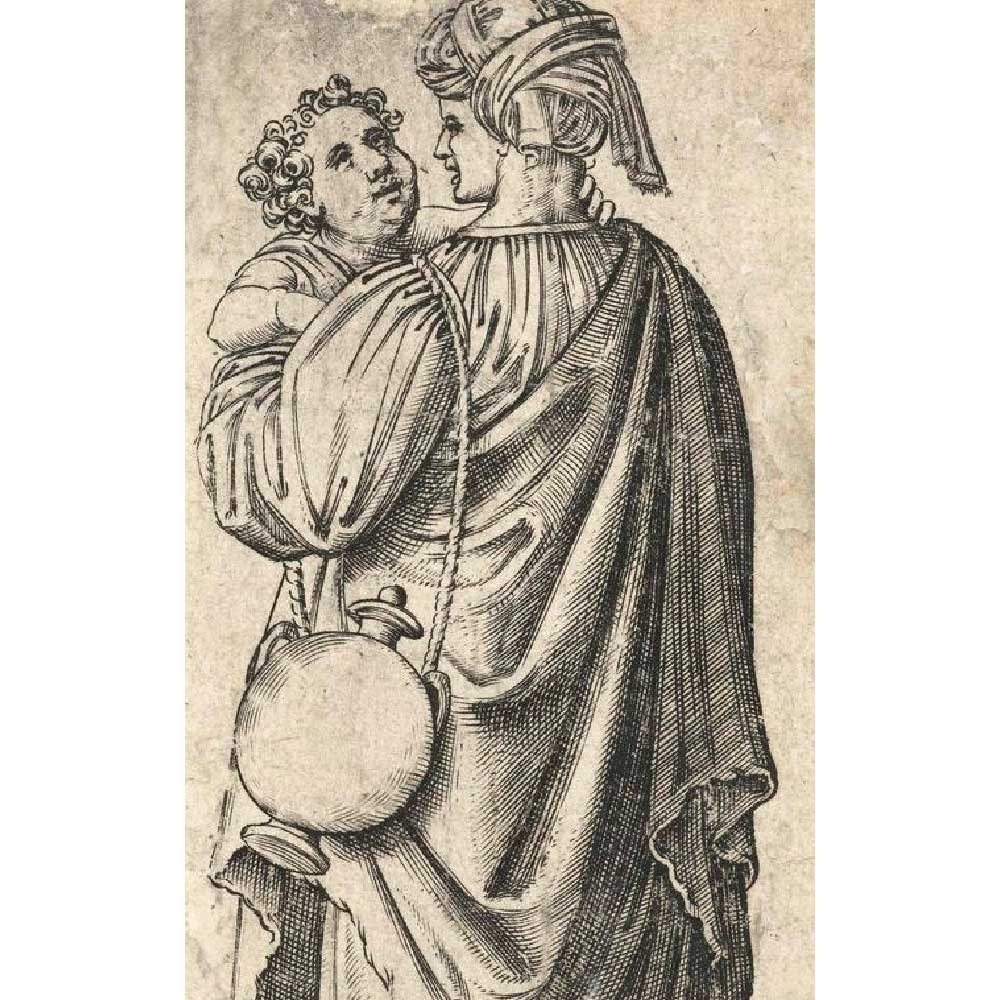
Costrel being carried

Minton Moon Flask Front by C. Dresser

Minton Moon Flask Back by C. Dresser

Storks by C. Dresser
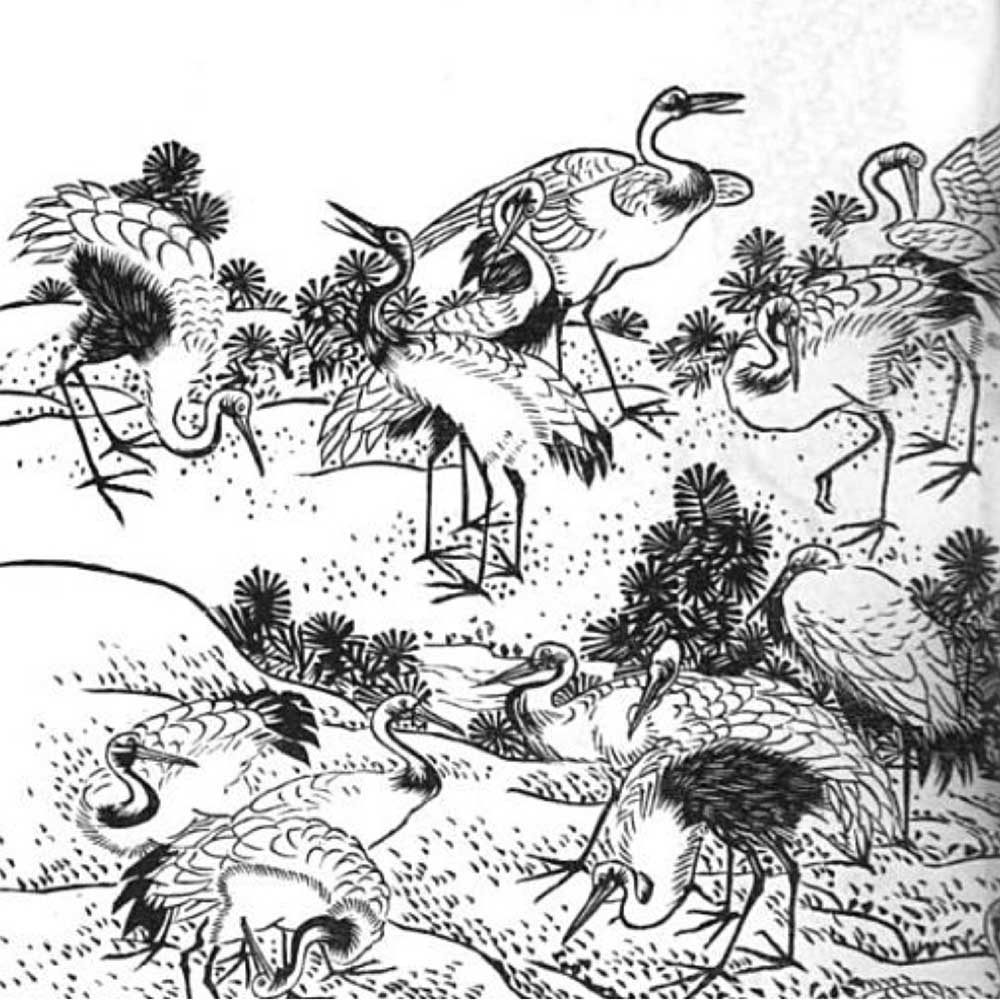
Storks by C. Dresser

Minton Birds & Blossoms by W. Mussill
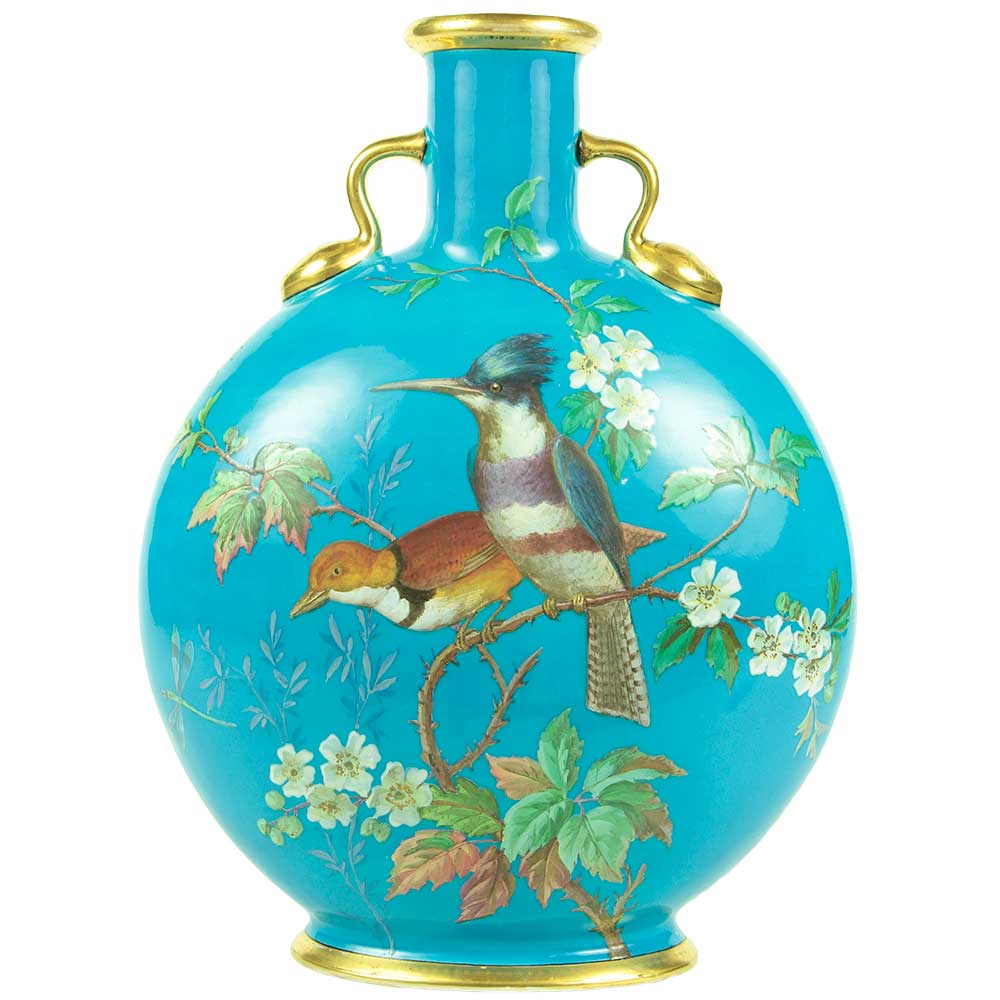
Minton Birds & Blossoms by W. Mussill

Minton Pâte-sur-Pâte Moon Flask by H. Hollins
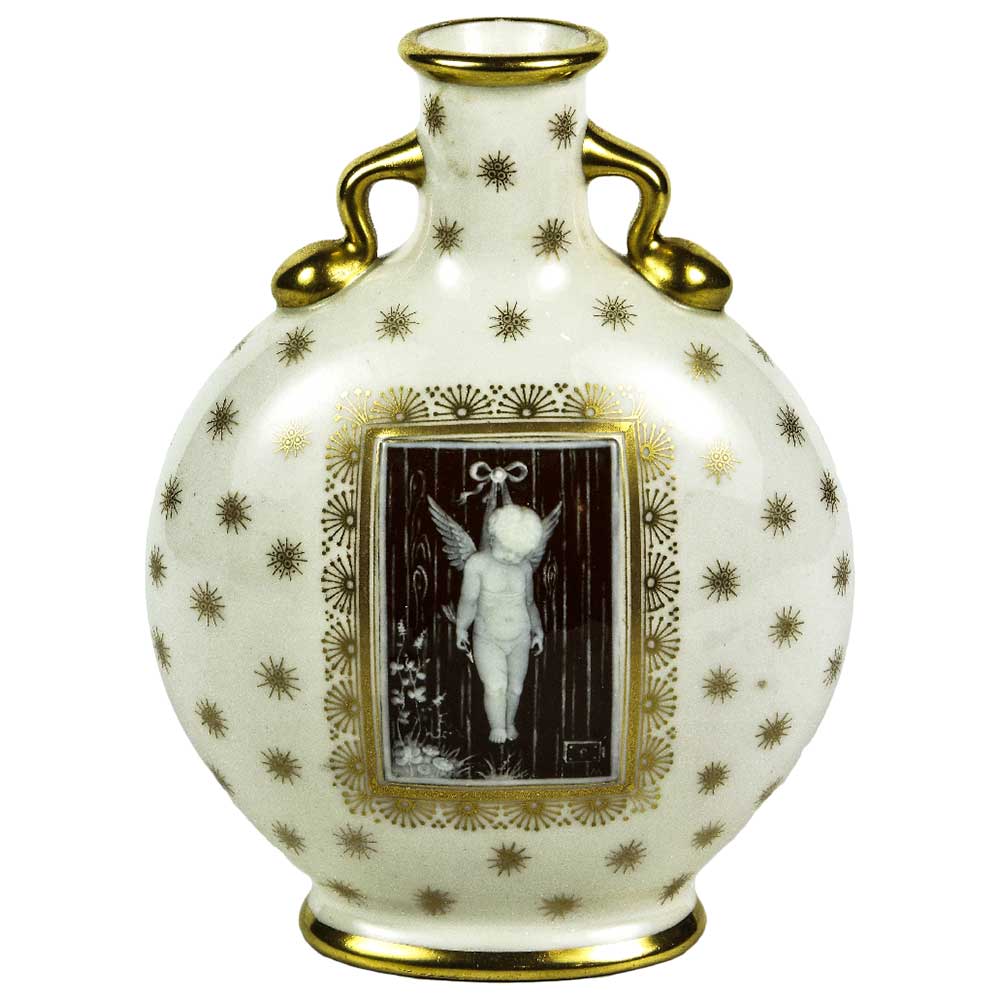
Minton Cupid Punished Moon Flask by A. Morgan

Coalport Chinoiserie Moon Flask

Minton Art Pottery Advertisement
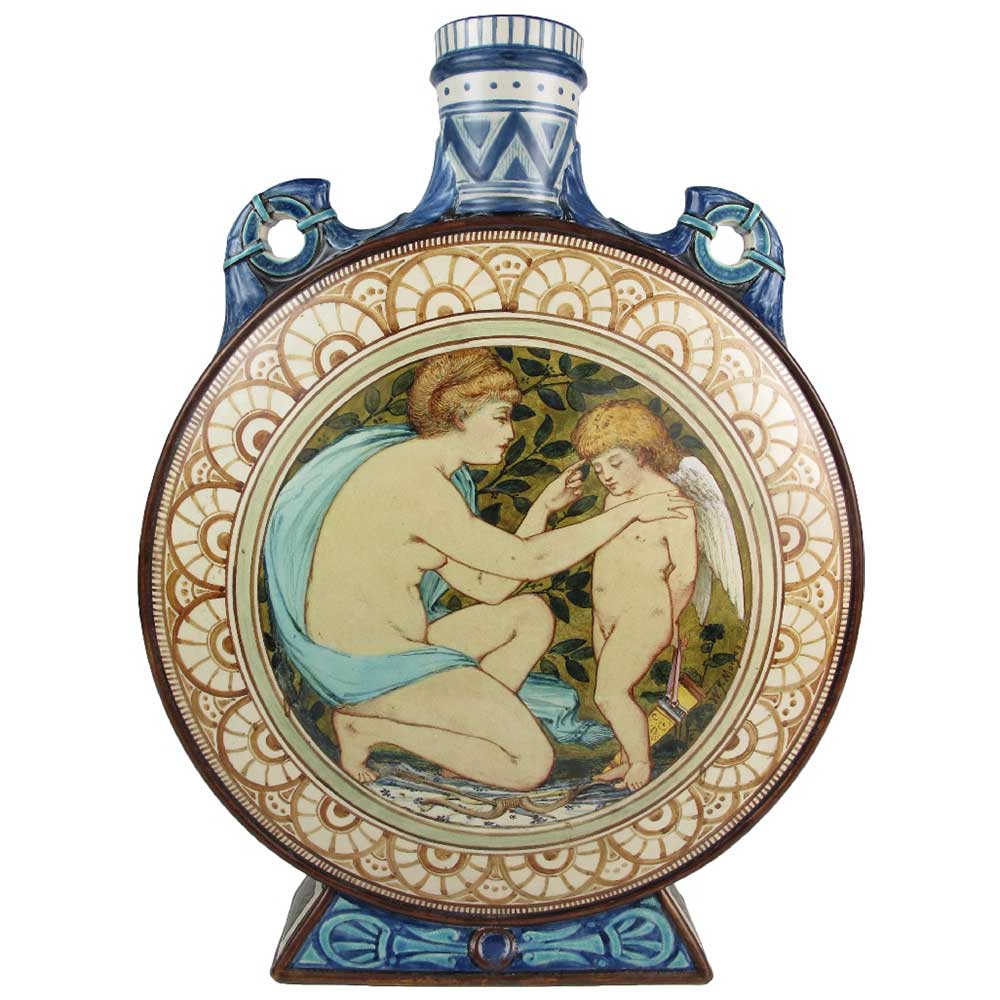
Minton Cupid Punished by W. J. Morgan
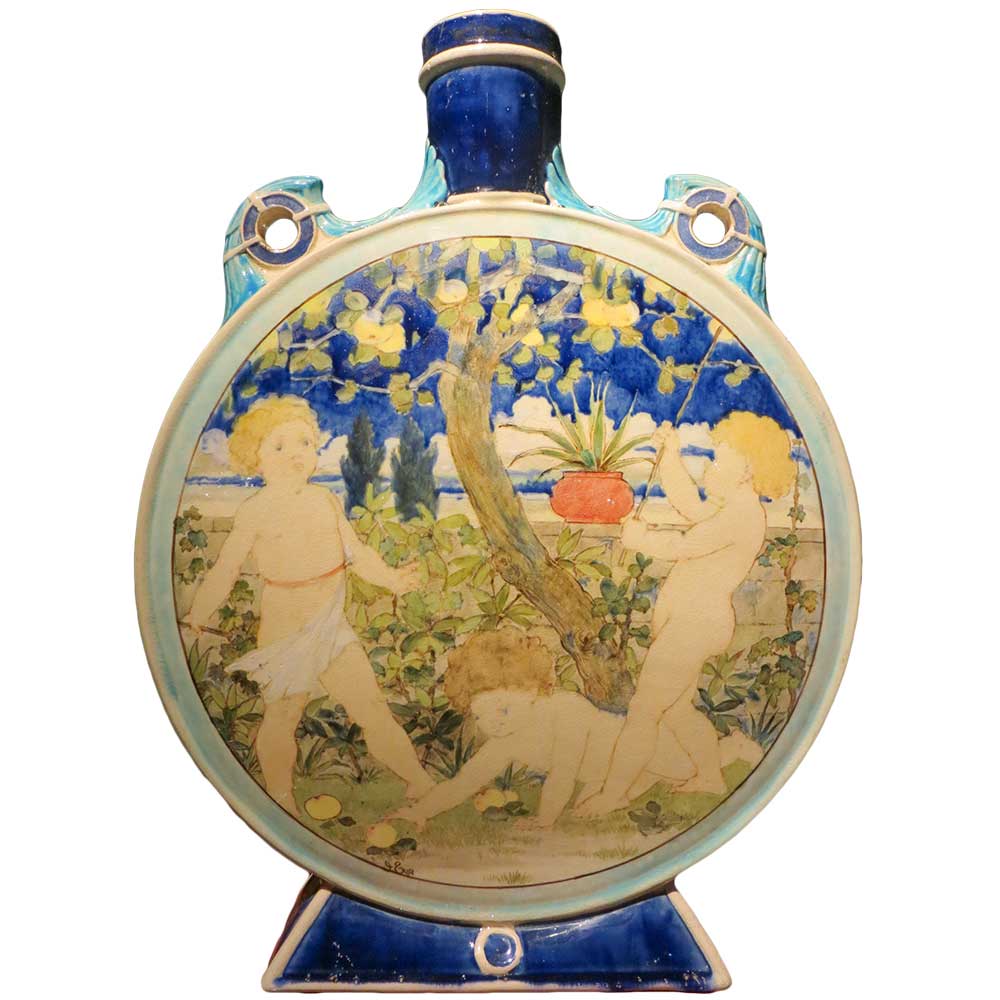
Minton Pilgrim Flask by J. Eyre
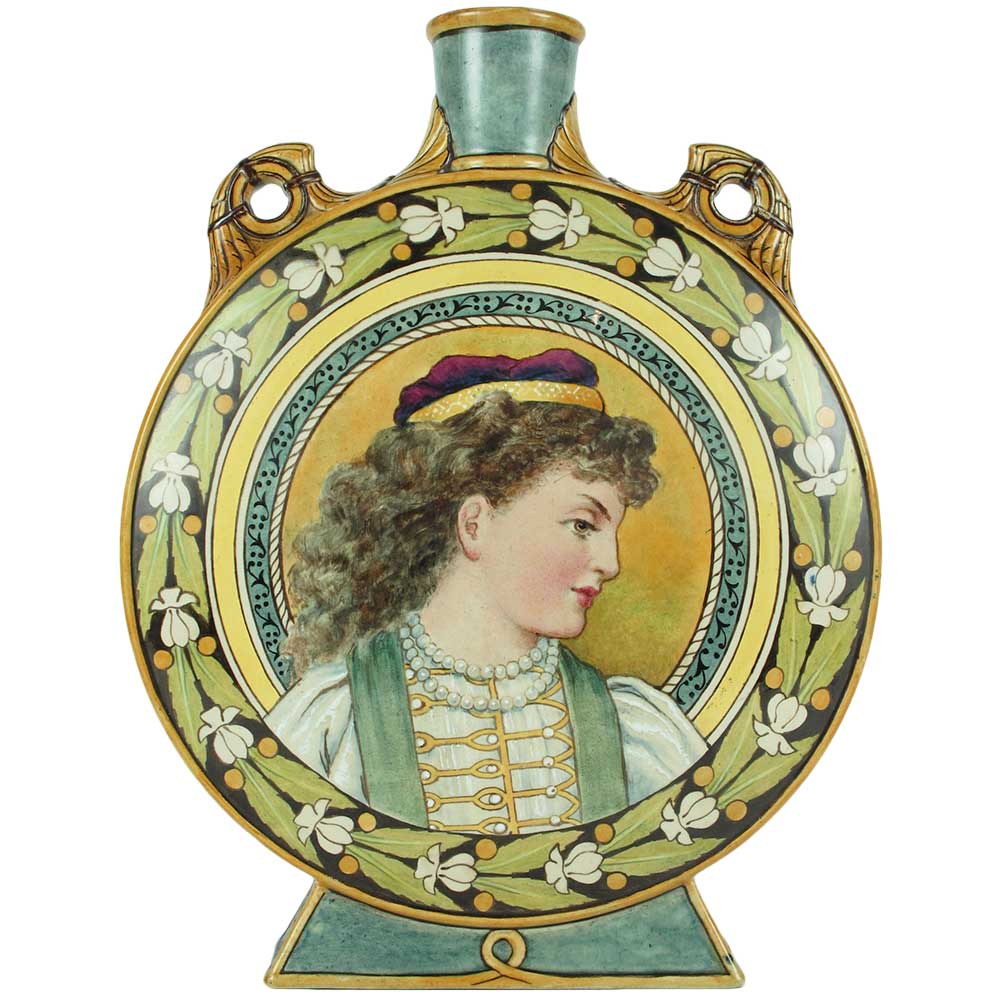
Minton Pilgrim Flask by R. Coleman

Minton Charger by R. Coleman
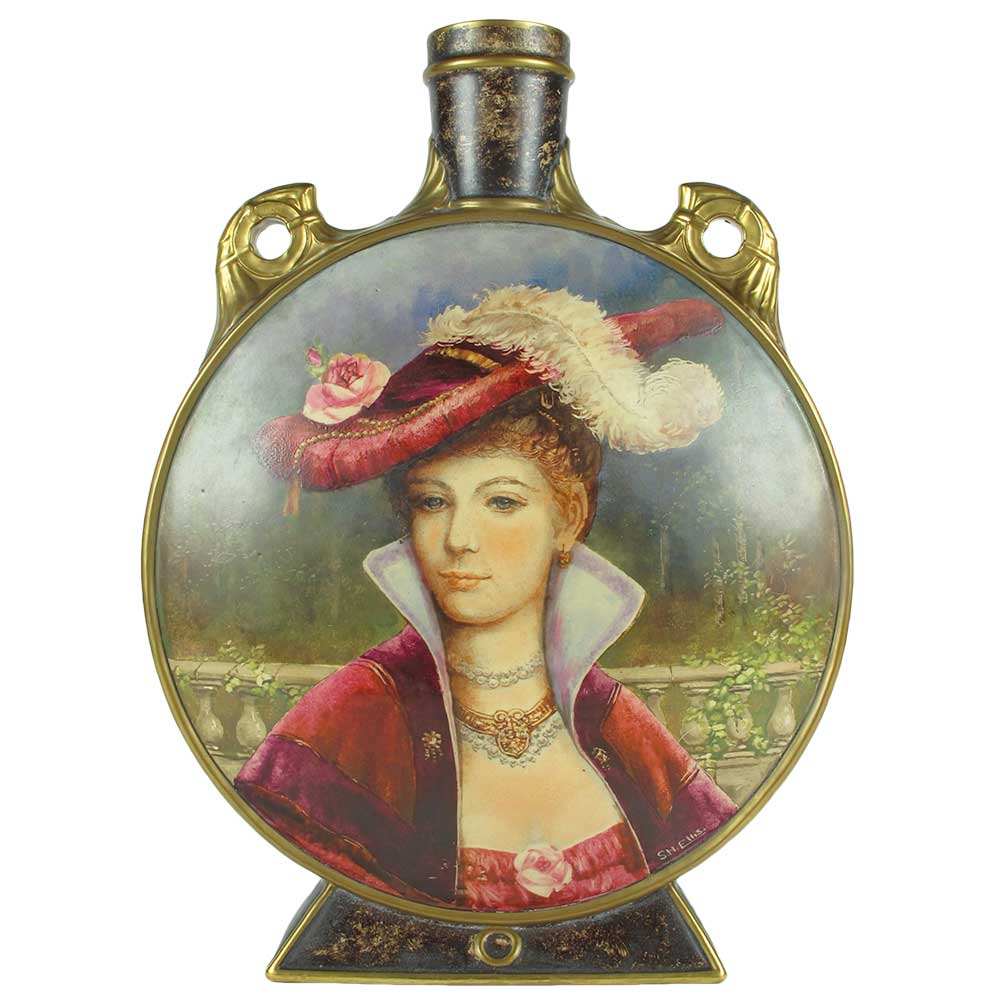
Minton Moon Flask by S. H. Ellis
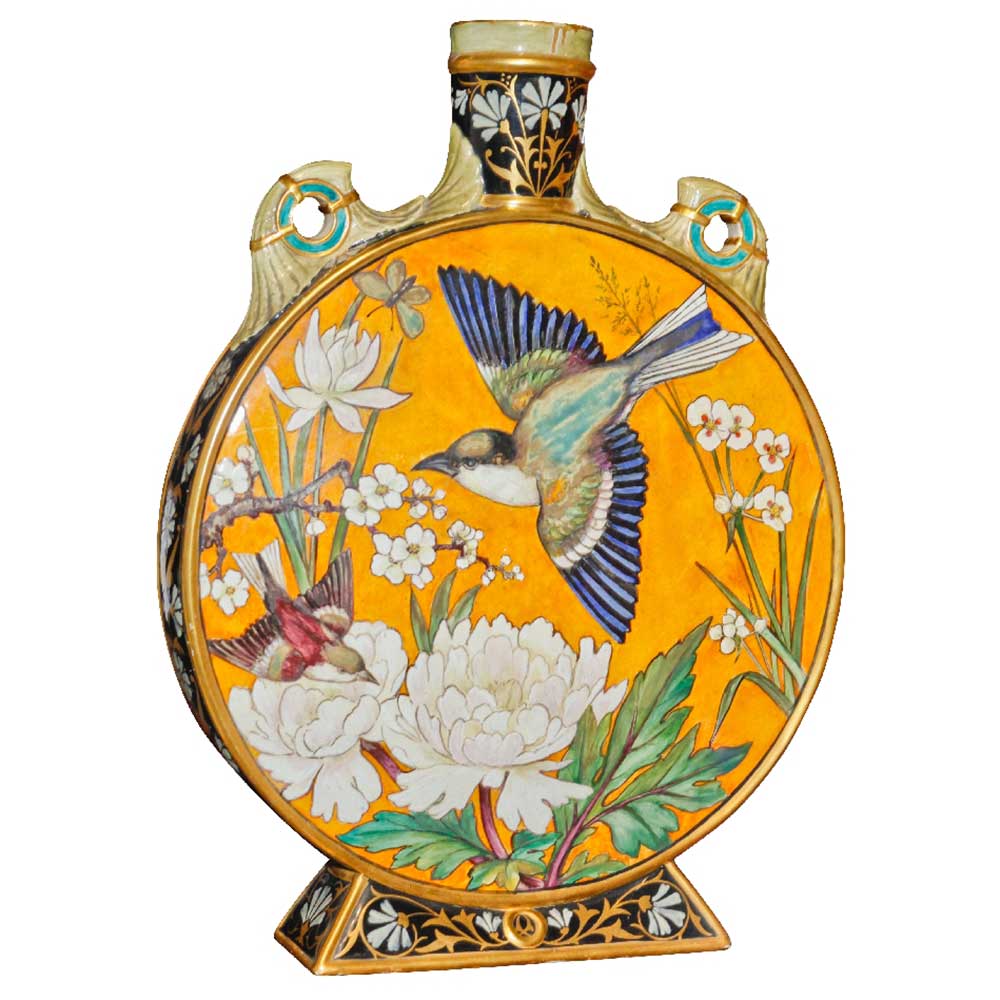
Minton Birds and Flowers Pilgrim Flask

Minton Birds in Blossom Pilgrim Flask
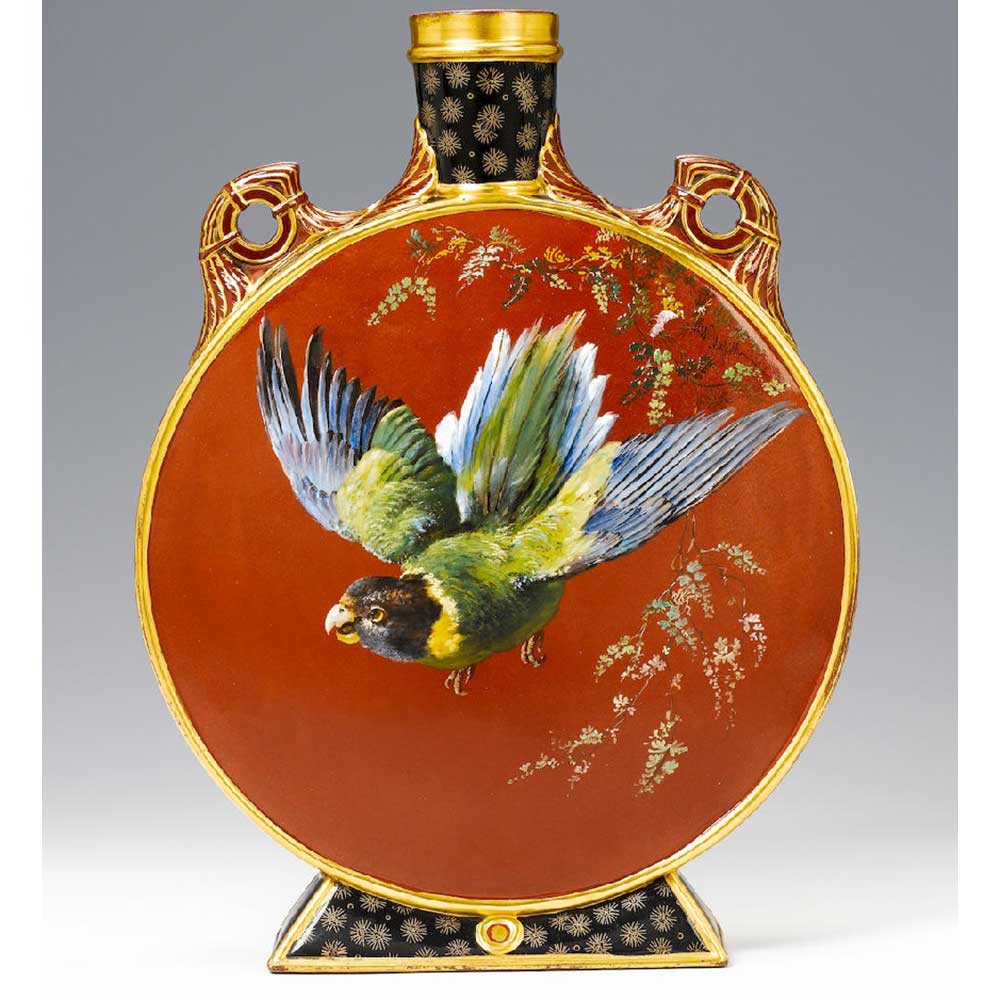
Minton Parrot in Flight Pilgrim Flask by W. Mussill

Doulton Faience Moon Flask by A. Dennis
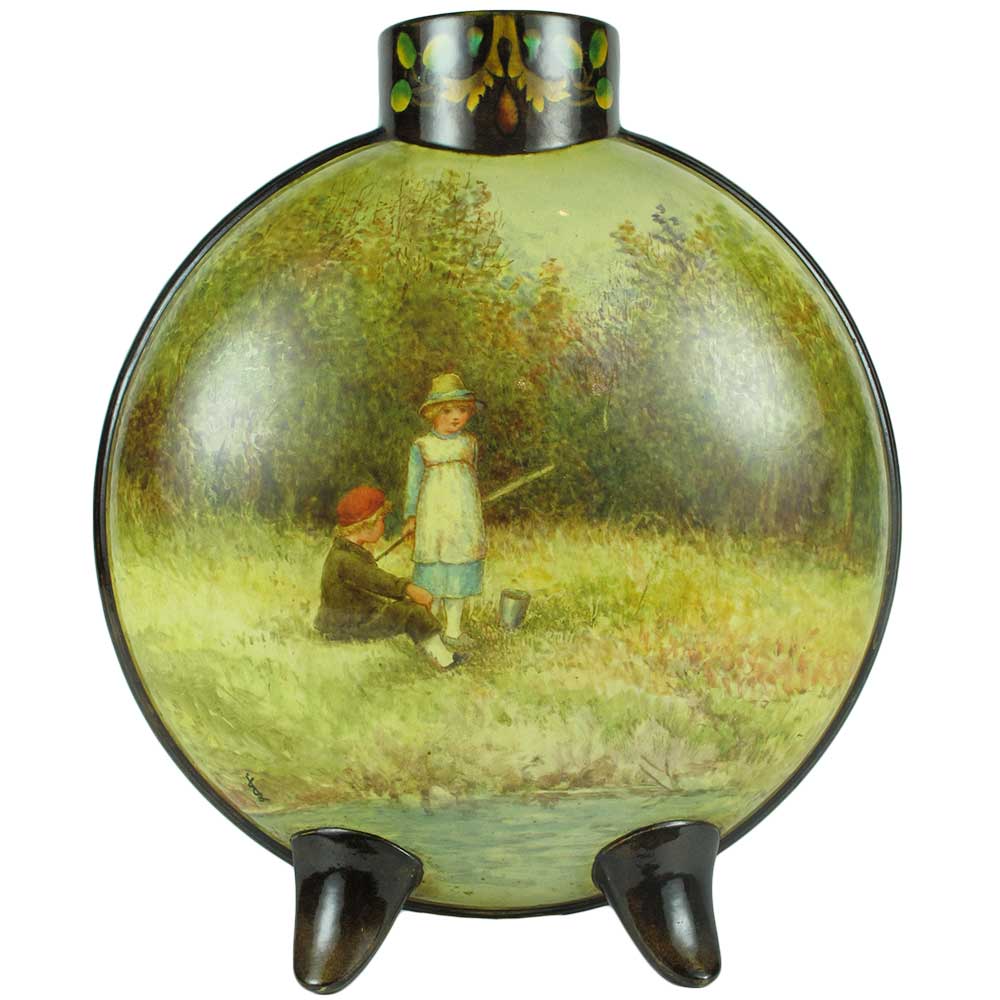
Doulton Faience Moon Flask by E. Lewis
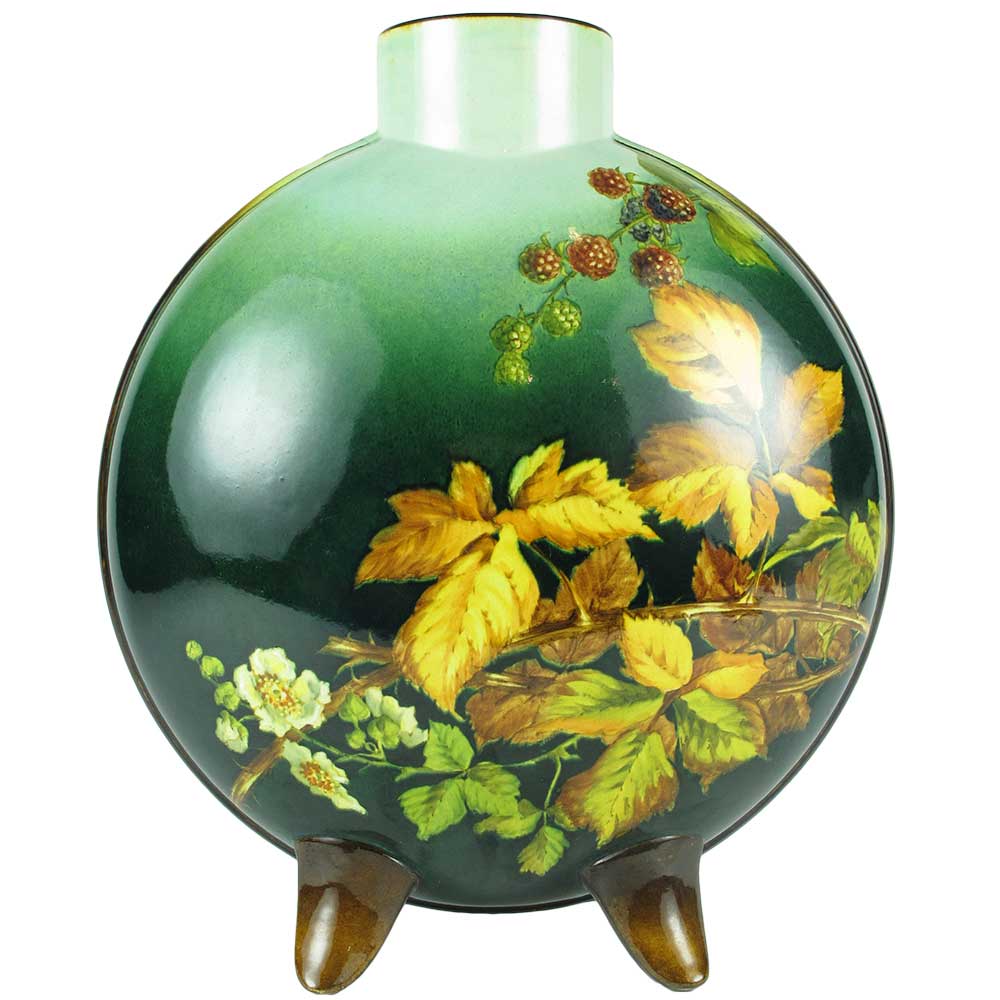
Doulton Faience Moon Flask by E. Hubert

China Painting Illustration by F. Lewis
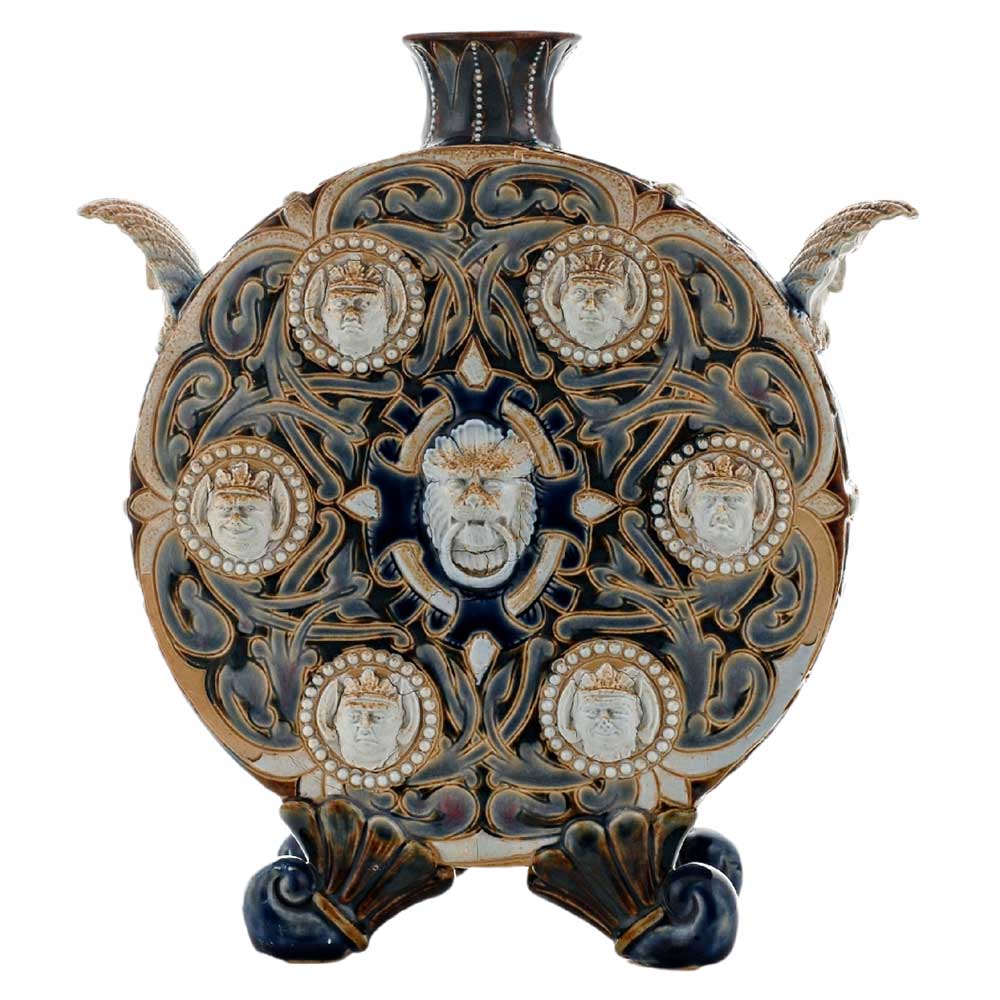
Doulton Lambeth Stoneware Moon Flask
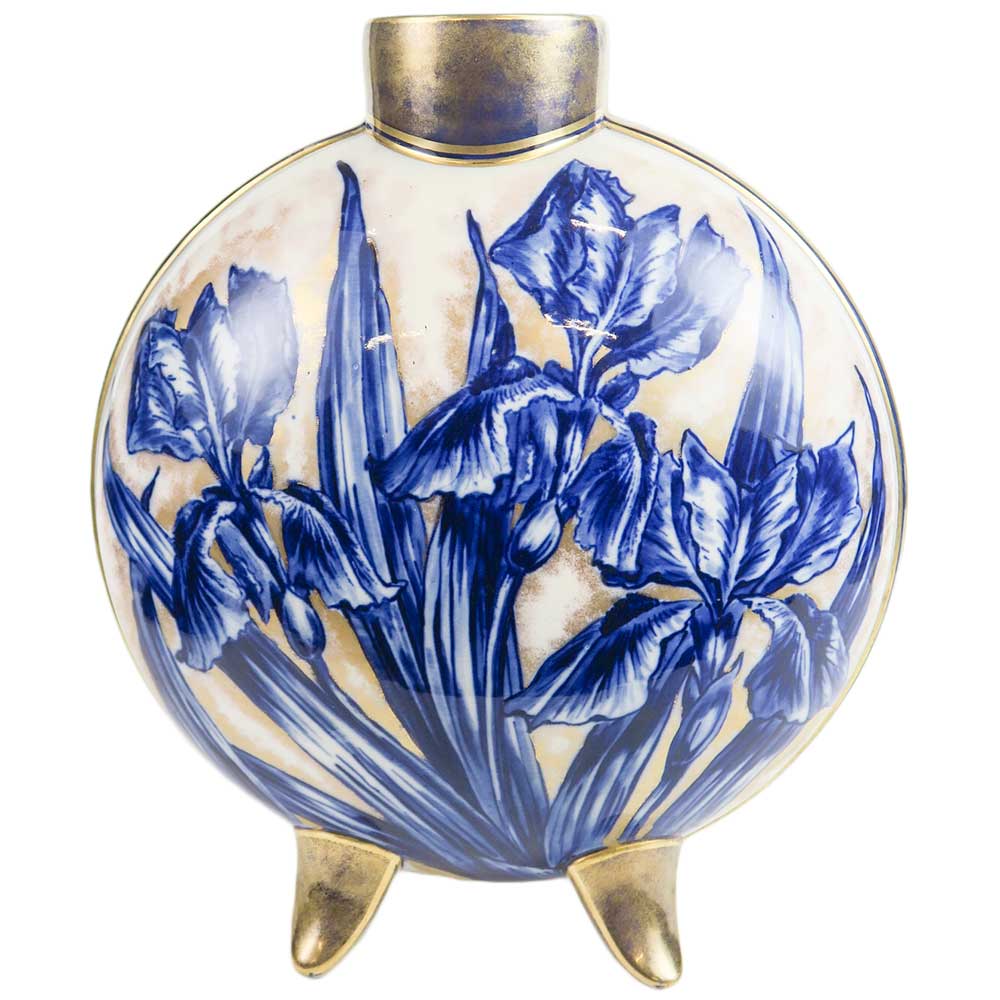
Doulton Burslem Moon Flask
